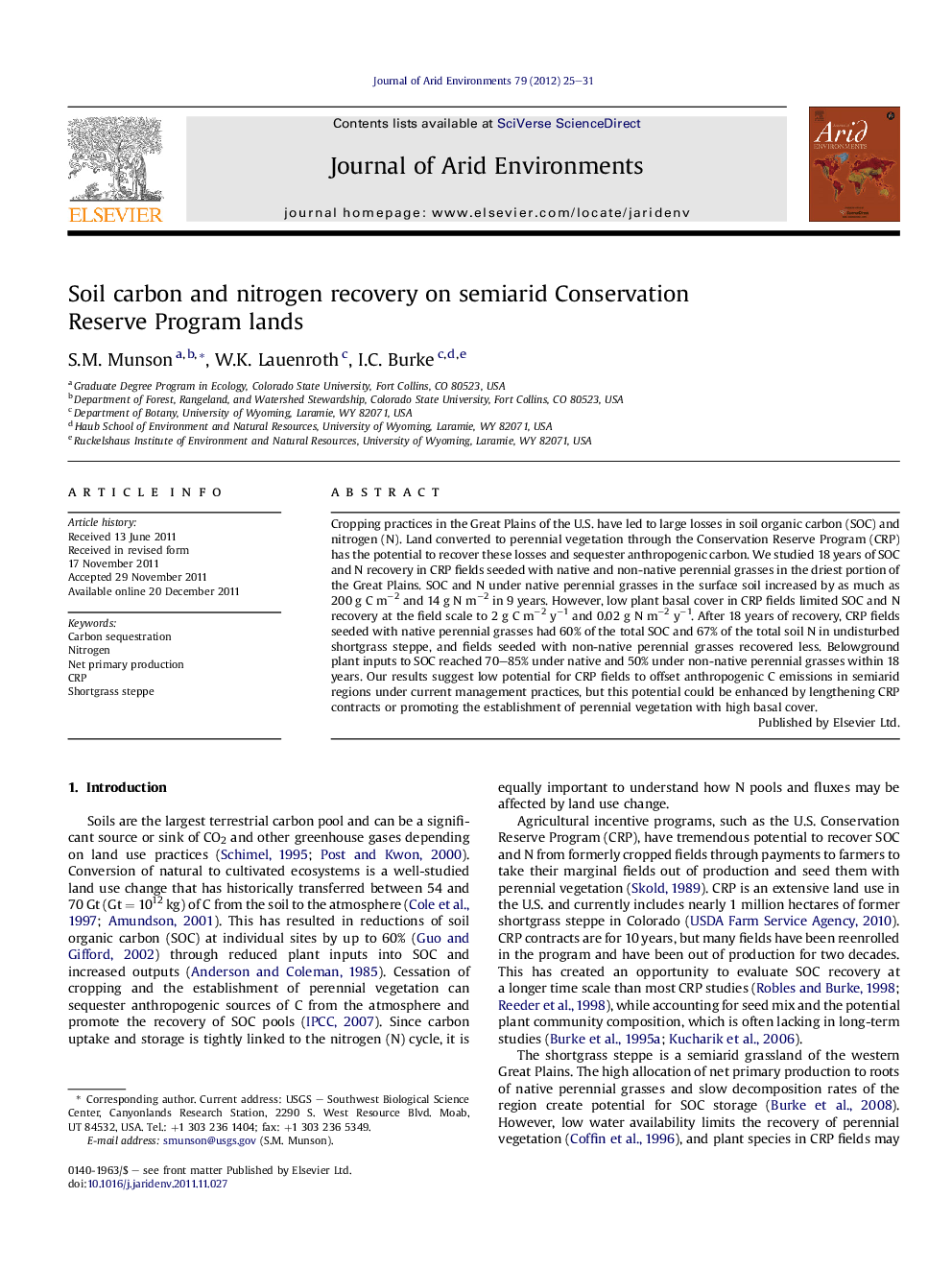| Article ID | Journal | Published Year | Pages | File Type |
|---|---|---|---|---|
| 4393441 | Journal of Arid Environments | 2012 | 7 Pages |
Cropping practices in the Great Plains of the U.S. have led to large losses in soil organic carbon (SOC) and nitrogen (N). Land converted to perennial vegetation through the Conservation Reserve Program (CRP) has the potential to recover these losses and sequester anthropogenic carbon. We studied 18 years of SOC and N recovery in CRP fields seeded with native and non-native perennial grasses in the driest portion of the Great Plains. SOC and N under native perennial grasses in the surface soil increased by as much as 200 g C m−2 and 14 g N m−2 in 9 years. However, low plant basal cover in CRP fields limited SOC and N recovery at the field scale to 2 g C m−2 y−1 and 0.02 g N m−2 y−1. After 18 years of recovery, CRP fields seeded with native perennial grasses had 60% of the total SOC and 67% of the total soil N in undisturbed shortgrass steppe, and fields seeded with non-native perennial grasses recovered less. Belowground plant inputs to SOC reached 70–85% under native and 50% under non-native perennial grasses within 18 years. Our results suggest low potential for CRP fields to offset anthropogenic C emissions in semiarid regions under current management practices, but this potential could be enhanced by lengthening CRP contracts or promoting the establishment of perennial vegetation with high basal cover.
► Land enrolled in the Conservation Reserve Program (CRP) can sequester carbon. ► We studied 18 years of soil C and N recovery in the driest part of the Great Plains. ► Recovery occurred primarily under perennial grasses and was low at a field scale. ► CRP fields with native and non-native perennial grasses had different patterns of recovery.
